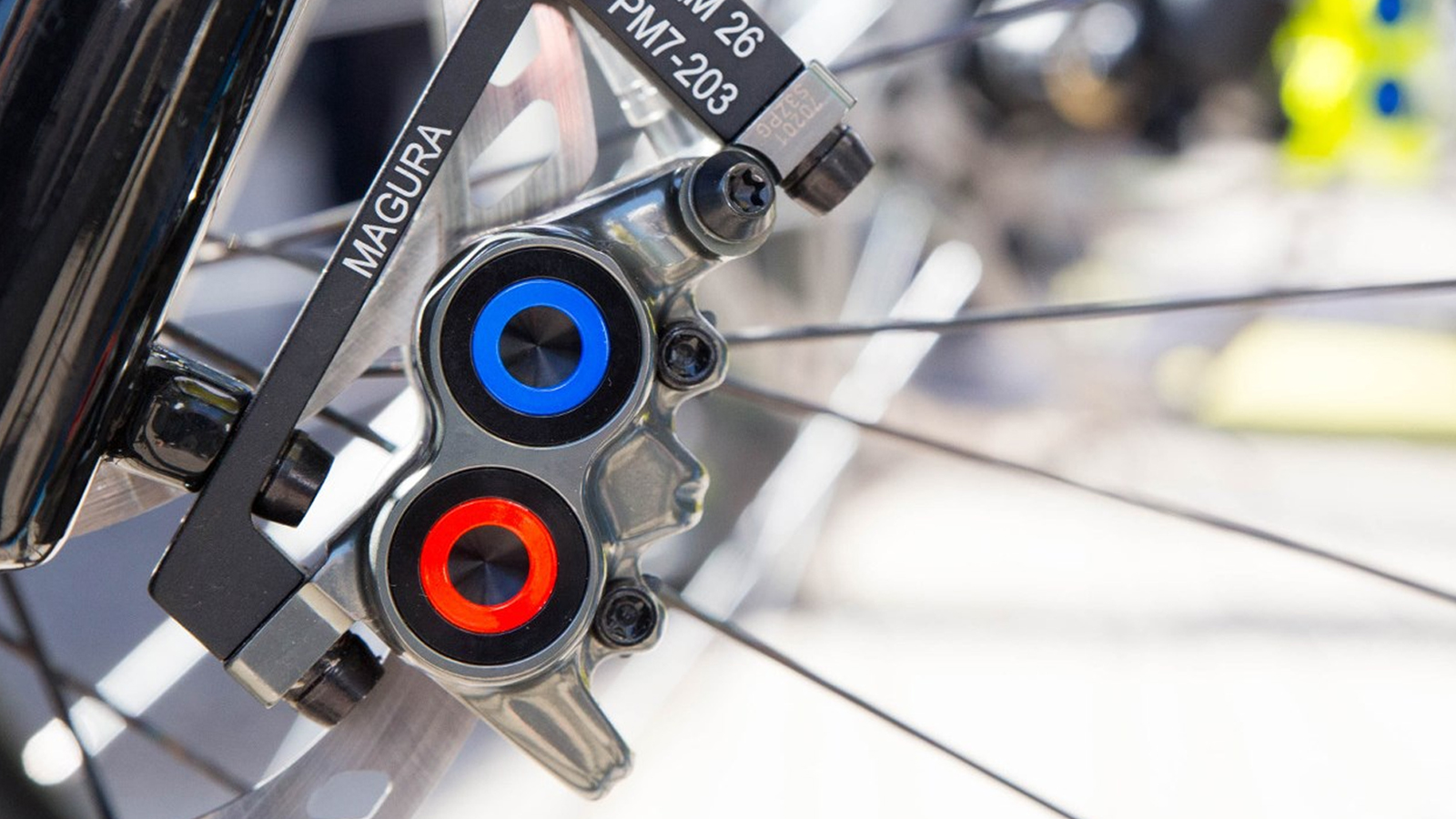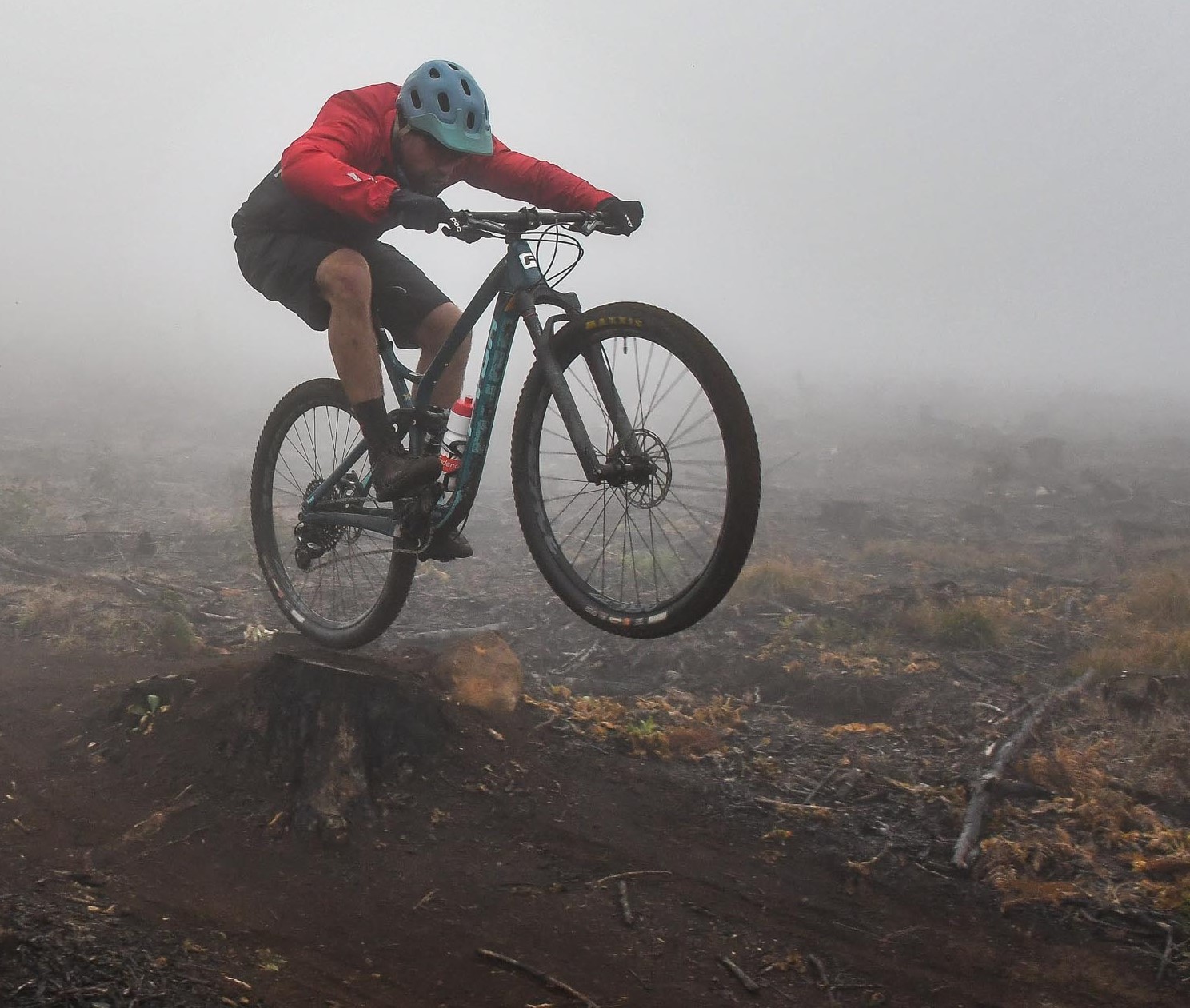The brake debate: two- or four-piston calipers?
Is there better feel and riding dynamics to be had by doubling your amount of brake pressure points?

The hydraulic disc brake has been a revelation for mountain bikers, even since it was introduced in the mid-1990s.
Although mountain biking traditionalists initially judged the hydraulic brake as complete overkill for an off-road cycling application, market acceptance has been overwhelming.
Terrain demands have created more capable bikes and the hydraulic brake has come into its own as we started to ride steeper and more challenging trails.
With a mature design and engineering legacy of nearly three decades, hydraulic disc brakes work fantastically well. The only question about brakes, most mountain bikers in 2020, is whether they should perhaps consider upgrading to double the number of pistons?
For all but the most extreme downhill racing applications, two-piston caliper brakes have been perfect. Large riders and daring gravity racers benefit from four-piston brakes, but for most cross-country riders and singletrack trail riders, they seem very excessive.
In the last decade there have been fundamental changes in mountain biking which has enlivened the debate about four-piston calipers on shorter-travel bikes and hardtails. And with most things in cycling, it all starts with your wheels.
Managing more rolling momentum
With mountain biking having come to accept the 29er wheel standard as its default, there have been two unintended consequences.
The first is improved technical trail riding ability, simply by virtue of the larger wheel’s superior rollover. This has created greater aggregate rider confidence and seen more people attempt steeper and technical trails than before. The kind of trails where braking forces are tested at a premium.
A second factor is that any 29er wheel has more rotating mass and momentum than smaller wheel sizes, which must be controlled and slowed by the braking system. Two-piston brakes are proven and work wonderfully on flowing forest singletrack, but if you are edging down a steep Alpine black-graded trail, you might appreciate the benefit of a four-piston configuration.
Why are four-piston brakes better? It is a simple question of pressure dynamics. Having more contact area on the pad will give you more powerful braking, for the same amount of lever actuation and hydraulic pressure movement.
On steep trails where two-piston brakes start to fade, a four-piston caliper will retain its power and consistency. While there is no question about the outright power of a four-piston brake, compared to a two-piston, the issue of feel is subjective.
Four-piston brakes are so much more powerful than a two-piston and, for many riders, they might be a touch too responsive. Some brands offer smaller pistons, of different sizes, which creates a more gradual contact pressure point with the pad. The result of this is superior modulation and feel, without a notable reduction in four-piston braking power or fade-resistance.
As bikes become more capable and riders more daring, the market has responded with a range of slick four-piston brake systems which are light and ergonomically elegant, unlike the monstrously heavy four-piston setups of yore.
Durability is another aspect where the four-piston brake can have advantages. By spreading the brake force load over more of the pad, it doesn't severely wear a smaller, more concentrated contact point, as is the case with a two-piston.
If you are riding steep trails every other weekend, swapping from two- to four-piston caliper brakes, might be the missing upgrade, in making you a more confident descender.

Lance Branquinho is a Namibian-born journalist who graduated to mountain biking after injuries curtailed his trail running. He has a weakness for British steel hardtails, especially those which only run a single gear. As well as Bike Perfect, Lance has written for MBR.com, Off-Road.cc and Cycling News.
